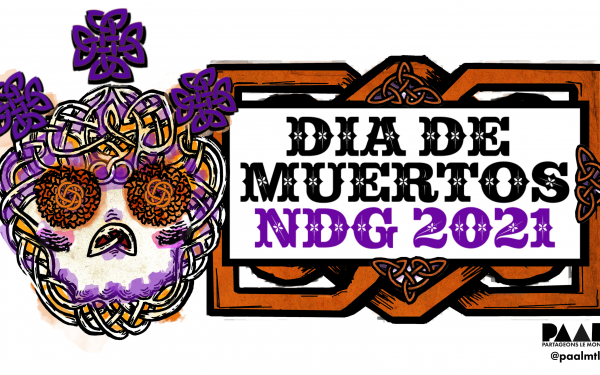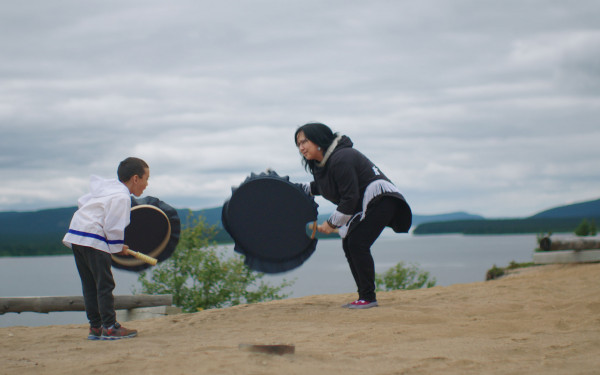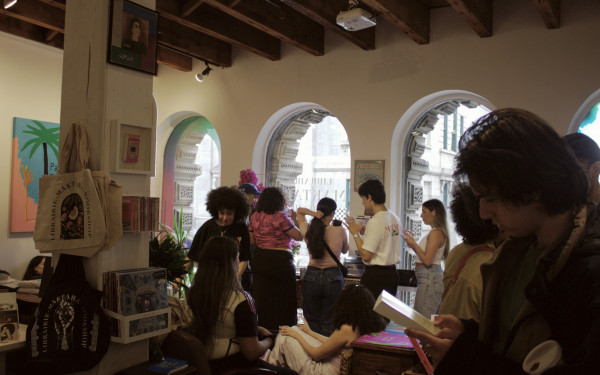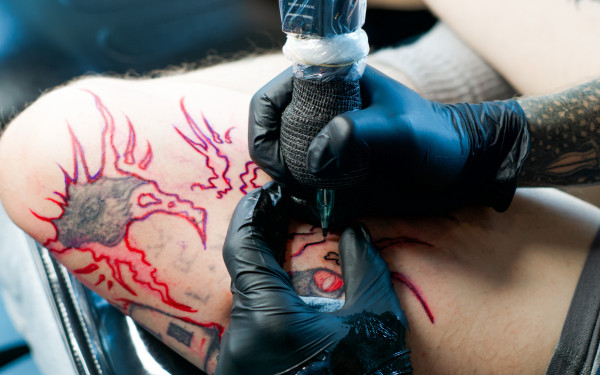Ay de mí, Llorona, Llorona!
Celebrating Day of the Dead in Montreal
As November approaches, Mexican households are decorated with cempasúchil flowers and pan de muerto, all while nostalgia fills the city streets.
Day of the Dead, or ‘Día de Muertos’ in Spanish, celebrates memory, a ritual that focuses on remembering over forgetting. While in Mexico the celebration varies from state to state and even from town to town, it has the same principle throughout: bringing families together to welcome their loved ones who come back home.
Cempasúchil flowers and pan de muerto are two of the most popular symbols present in Día de Muertos—the former is believed to guide the dead through our world due to its strong smell, while pan de muerto is a type of bread made with wheat flour, milk, yeast, salt, butter, a touch of anise, and orange or orange blossom essence. Pan de muerto is a memorial of the deceased, decorated with two crossed strips of dough that symbolize the bones of the human body and sprinkled with sugar.
Jimena Almaraz was born and raised in Queretaro, México and Claudia Velázquez is from Mexico City. They both recently moved to Montreal due to their family's job change. The two agree that the holiday embraces the memories of those who have passed on, as a way to remember the journey of the deceased through the world and one's life.
"You reflect on how you will transcend and how the people you love will remember you," Velázquez said.
Art historian from the Universidad Iberoamericana Veka Duncan explained in a video essay that, “In Mexico, pre-Columbian cultures understood death as part of the inseparable duality of life. In pre-Hispanic times, death began with a journey through Mictlan (the kingdom of the dead) which the Spanish understood as hell. What we know today as the Day of the Dead was celebrated in the ninth month of the solar calendar. After the Spanish conquest in the 16th century, the concept of death was linked to the idea that exists in Christianity.”
Velázquez has been celebrating Día de Muertos each year since she was little.
However, the Almaraz family did not celebrate Día de Muertos until five years ago. "Now we get together to eat pan de muerto. My grandma makes hot chocolate, and we just like listening to my grandpa telling jokes and anecdotes about our dead relatives," Almaraz said.
A topic that came up frequently during The Link’s conversation with Almaraz and Velázquez was altars, or ‘ofrendas,’, which are central to the Día de Muertos tradition. Giving to deceased loved ones makes them feel closer to family members and friends, making this tradition a sacred ritual.
“Día de Muertos is celebrated on Oct. 31, Nov. 1 and 2, dates established by the Catholic Church. The souls of the dead return at night to enjoy the food and flowers that have been offered to them,” explained Duncan in her video essay. “Thus, the altar of the dead is a syncretism between pre-Hispanic and Spanish culture.”
Velázquez said her family fixes the altar with food their loved ones liked most: mole, pan de muerto, skulls made out of sugar, chocolate, coffee, sweets, tequila and wine.
Almaraz mentioned that although her altar showcases a picture of her dog who passed on, she warns others to be careful when doing the same. "Animals, especially dogs, should not be placed on altars if recently passed. They are spirits that guide souls to the other world, so if you put them in your altar too soon, their souls might get lost," she explained.
How an individual relates to Día de Muertos is unique. Almaraz’s perception of the holiday has changed since she moved to Montreal. She has learned to appreciate the tradition even more because she failed to fully embrace the holiday in Mexico.
"I truly miss it, especially as someone who has danced folklore (Ballet Folklórico brings together the music, dance and costumes of Mexican folklore, from pre-Columbian civilizations through the modern era) my entire life. It is nice to show what Mexico is like on dates like these and the reason for our festivities," Almaraz said.
The colours and cempasúchil are some of Almaraz and Velázquez’s favourite parts of the holiday. When Almaraz was younger, she viewed cempasúchil as a marker of time: she knew that when the flowers were all around the city, Día de Muertos was near.
"It was one of those few times when my house, my city, and everything seemed to be in order. People see the day as something good. I really liked going out to see the altars, how people portray and remember their dead," Almaraz said.
When asked about a particular memory Velázquez keeps close to her heart, she brought up Calaveritas literatrias, satirical poems that critique or poke fun of the living individuals, which are written in school. "They were not mean, but rather funny. I find it unique that we make fun of death from a very young age," Velázquez said.
"The first time I spent the Día de Muertos with someone was with my ex-boyfriend [...] I took him to see the Día de Muertos altars downtown. He told me that he had never appreciated the traditions of Mexico before. I still thank him for allowing me to share my passion and appreciation for the Día de Muertos with him," Almaraz said.
Día de Muertos is a deep tradition that has ingrained significance in the hearts of so many people in Mexico and across the globe. Almaraz said she hopes readers can enjoy it as much as she does, even though she is far from home. "We see death as a legacy. Do not hesitate to investigate and enrich yourself with what Mexico has to offer; it is a lot of history, but I hope you can find the same colors as me," she said.
This article originally appeared in Volume 44, Issue 5, published October 31, 2023.

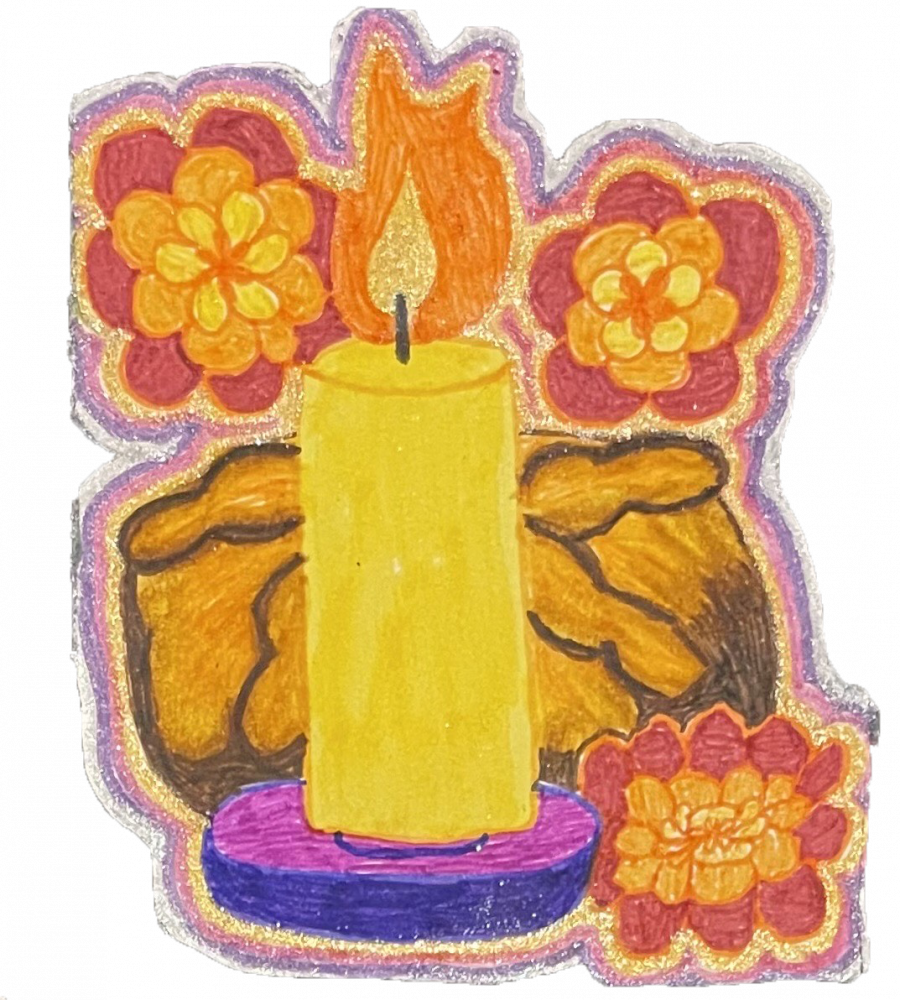
_600_832_s.png)

